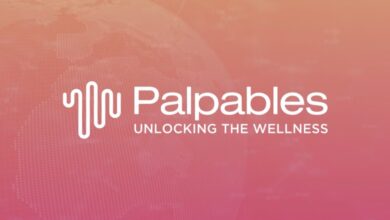Mastering the Art of Google Ads: Psychological Strategies for Maximum Clicks and Engagement

Standing out in the noise is every marketer’s challenge in today’s digital space, where online advertisements have become the trend. For businesses which work with Google Ads management, the key to creating hooking ads and driving meaningful engagement lies in an understanding of the psychology behind a click. In this article, deeper levels of psychological principles that will help elevate your Google Ads campaigns show how to craft effective ad copy, ways to use emotional triggers effectively, and how to choose keywords strategically for maximum clicks.
The Psychology of Every Click: Why Users Engage with Ads
Any time a person clicks on a Google ad, it is in response to psychological triggers and emotional cues that make him or her do so. Driving an effective strategy in Google Ads management depends basically on the understanding of what makes users tick. Let’s look at some key psychological principles behind user behavior:
The Power of Emotional Triggers: Humans are emotional by nature, and it has been proved that decisions taken, even online, are driven more by emotions than pure logic. Building ad copy around generating strong emotions, such as excitement, urgency, or curiosity, can really improve engagement rates. Examples of words and phrases that lead to excitement and urgency include “exclusive offer,” “limited time only,” and “discover your dream solution”; these ring an alarm for users to act fast.
Social Proof Builds Trust: Social proof, popularized by Robert Cialdini, is a concept wherein people do what others do, especially when they are uncertain. Ads showcasing customer testimonials, reviews, or endorsements from credible sources build a level of trust for the ad. Potential customers will most likely click on an ad once others have positive experiences shown.
Using FOMO – Fear of Missing Out: FOMO has a strong psychological driver that can provide motivation for users to do desired actions. By producing a scarcity element or generating urgency within your ad copy, such as “only 3 spots left” or “offer ends tonight,” the act of FOMO will be triggered whereby users are compelled to click before it is too late. This would appeal to the basic human tendency whereby people want to avoid loss and further capitalize on an opportunity which comes with limitations.
Ads That Connect: Creating Best Practices in Google Ads Management
Following are some best practices where you can relate to your audience and make the most out of CTRs.
- Create Irresistible Headlines: Every ad headline will be the very first thing a user sees, and should make the users stop in their tracks. Use impactful, action-oriented language with keywords highly relevant for your target audience. A well-constructed headline should succinctly communicate value proposition to users and tempt them to click.
- Run A/B Testing: Continuous testing is a must in knowing which ad copy, visuals, and CTAs resonate with your target audience. That being said, perform A/B testing where you are developing different variations so as to identify which creatives yield the most value out of your audience. Take this data and refine your Google Ads Management approach over time.
- Retargeting: Few users actually convert during their maiden visit. Retargeting is a way of reaching users who visited your website or engaged with your ads. You can deliver targeted adverts to these users, reminding them of your brand, and re-igniting interests to complete their desired action.
- Optimize for Mobile Devices: As the majority of online searches come through mobile devices, optimizing your ads for mobile will yield returns. Use short, straightforward copy that works within the smaller screen real estate, and consider mobile-specific features like click-to-call that improve the user experience and encourage conversions.
Keyword Strategy: The Foundation of Effective Ad Campaigns
Keywords are the heart of any Google Ads campaign based on SEO. Select them according to user intent so that your ads can appear in front of the right audience. Leverage tools such as Google Keyword Planner to come up with high-performing keywords, taking into consideration both short-tail and long-tail combinations.
Place your keywords strategically within the ad copy and landing pages to enhance relevance and Quality Score, reduce costs, and further maximize ROI. Also, do not forget to check your keyword performance data from time to time and update your keyword list to stay ahead of all trends and competition.
Conclusion: Turning Clicks into Conversions
A business that understands the psychological mechanisms underlying ad clicks and leverages those to steer its Google Ads Management to another dimension will do everything from writing emotionally compelling ad copy to using social proof to optimizing for mobile. Quite literally, every little detail must be just right to entice engagement and maximize ROI. Fundamentally, the final goal of such effort would not only be aimed at garnering clicks but also converting those clicks into meaningfully positive conversions that drive business growth.





